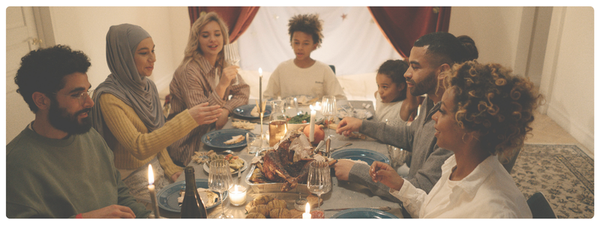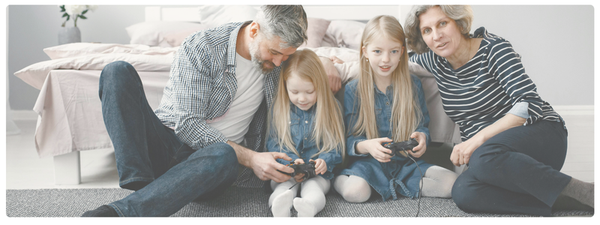When kids are old enough to start playing group sports, they’re also at a great age to start playing video games with a group. Whether cooperative, competitive, or co-playing with a sibling or parent, these digital play experiences expose young kids to some of their first experiences with losing.
And they don’t always take it so well. But that’s to be expected as they’re still learning, growing, and exploring what it is like to be a person in this world.
Young kids are not really exposed to that many competitive moments with their friends or directly compared to their peers. They are actually more likely to be put in situations where “everyone’s a winner,” and unique strengths are celebrated (which is great, for sure — don’t get me wrong there). Even on their report cards, they are often evaluated more on development and effort than on a traditional A-B-C-D-F scale.
We often talk about video games teaching young children traditional skills, like reading and math, but they also have a lot to teach us about losing. And that’s an essential skill for life.
Video games are often designed to give players immediate feedback on how they are performing (or not performing). This also provides a unique experience when it comes to losing. It happens instantly, vividly: on-screen scoreboards, animated podium sequences, the big, dreaded “GAME OVER.” Let’s be honest, even the easiest setting on Mario Kart can be a challenge for a 7-year-old (especially the first time they play it).
Yet the unique structures and feedback mechanisms of video games also feed into perfect opportunities to teach kids how not to be a sore loser — and how to be a good sport, instead. They can quickly try again and try playing differently, and through all of that, start developing their resilience and persistence.
With an extra layer of caregiver curation, video games can be a powerful way to develop a good sport, fostering compassionate, humble perspectives that carry over into the rest of their lives.
What Good “Digital” Sportsmanship Looks Like
The core tenets of good sportsmanship ring true whether kids are on the field or on the tablet: Empathy, fairness, and respect. These elements need to be applied not just to other players, but to the individual themself, too.
Losing is not a personal failure and it doesn’t mean we’re bad at something. It just means we didn’t perform as well that time and we have room for improvement. It’s important for kids to learn there’s always room for improvement — even when they win!
We often think of sportsmanship as something kids learn on a field, but digital play can offer many of the same lessons. Given how accessible and replayable they are, they can give even more opportunities to practice them. Video games give kids a safe, repeatable space to experience the full emotional arc of competition:
- The excitement of a close win
- The disappointment of a tough loss
- The challenge (and satisfaction) of trying again
The skills built in traditional sports, such as resilience, teamwork, emotion regulation, are easily strengthened and expanded through video games.
Games let kids rehearse these exact skills over and over again in the comfort of their own home. Plus, for many children who can’t or don’t want to participate in physical sports, digital play can be an accessible way to learn how to win kindly and lose gracefully.
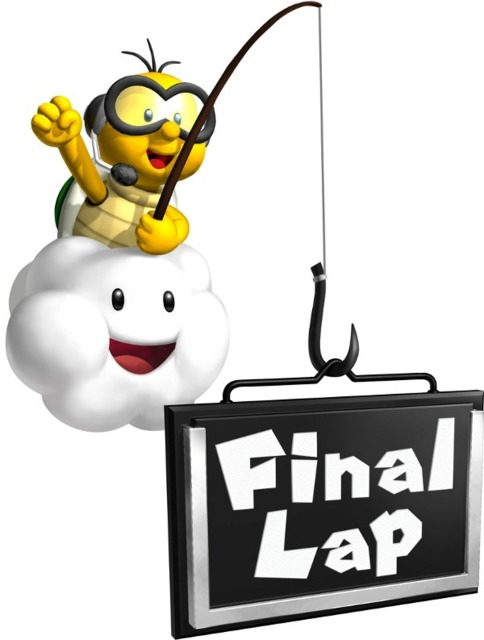
The bonus of digital games is that they’re usually vividly clear about when a loss occurs. Think of when you drive off the road in Mario Kart, and there’s a whole dramatic sequence when Lakitu (the flying koopa) reels you back up. The feedback is clear: you know what you did wrong, when it happened, and, possibly, how to avoid it on the next lap.
Let’s break down good sportsmanship before, during, and after the game.
Before the Game
Before kids even get started, it’s important to set expectations that the goal is to have fun and do better than last time (or, not — just having fun is totally valid), not to just win.
We also need to preface the experience with the inevitability of frustration. Talking about why our body responds to frustrating scenarios and how we can mentally and physically work through them, help make the experience enjoyable and developmental.
To make this all flow smoothly, parents can choose games that are challenging, but achievable. Always losing will get old quickly.
Amp up the moral support, too. Remind the kids how nice it feels when others cheer them on, and how easy it is to pass that positivity to their siblings.
During the Game
When the game begins, the heat is on. Modeling supportive language helps enact the right mindset. Simple things work, like:
- “Nice try!”
- “Let’s work together.”
- “That was a clever move!”
- “You did better than last time!”
Highlight their teamwork, effort, and creativity, not just outcomes. Caregivers can also help reframe win/loss thinking.

My son might say, “Shoot, I didn’t win,” and I can remind him, “Well, you came in 11th, not 12th this time — you kept trying, did something new, and kept participating. Let’s try again!”
This is also the time to break out the emotional regulation tools. Pause and take a breath, shake out the tension. Or, if it’s not feeling fun or inspired, it’s OK to walk away.
Taking turns and celebrating others' success is another important lesson here. Give kudos to parents, co-players, and whoever else made a smart move in the game. Just as it helps to have support when you lose, it’s more fun for everyone when we share in the victories, too.
After the Game
Take a moment to reflect on the experience when the game is over, whether they ended on good terms or because of overwhelming frustration. This is where the value of co-playing with a parent is amplified. If you’re there to witness and help with the reflection, kids can get more, deeper value from the experience.
When kids get upset, it’s usually because they feel like they could have performed better. You can dig into that feeling, or you can help them remember the value of practice and how much better they played than last time. Unpacking performance can be enriching. You can help them analyze their gameplay to understand how to perform better next time, which problems they need to solve, or how to re-strategize.
And prompting them with, “Let’s play again later,” reminds them how easy it is to jump back in, wherever they’re ready.
The Psychology of Losing: Self-regulation and Fairness
When playing video games, kids can get frustrated because they feel like they didn’t perform well. Some of the more dramatic displays — crying, screaming, having a tantrum, or throwing a controller — are actually an overflowing of that frustration, not the kind of strong anger it may come off as.
Erikson’s stages of development give us a powerful lens for understanding why winning and losing feel so big for kids ages 4–7. During this period, children move through the “Initiative vs. Guilt” stage and into “Industry vs. Inferiority,” where they’re testing their abilities, comparing themselves to others, and becoming sensitive to feelings of pride, embarrassment, success, and failure.
They’re trying to develop a sense of pride in accomplishments and abilities. That makes losing hard because they’re trying to demonstrate competence.
This also happens to be the age when fairness, rule-following, and delayed gratification really start to matter, yet can also feel the hardest.
Digital play fits beautifully into this developmental moment. Games offer:
- Clear rules
- Immediate feedback
- Endless chances to try again
These elements give kids a low-stakes space to:
- Experience disappointment
- Adjust their strategy
- Build confidence, resilience, and persistence
When adults help kids frame losses as learning opportunities and wins as moments for kindness, they reinforce the exact skills Erikson highlighted: emotional regulation, resilience, empathy, and the motivation to keep going even when something feels challenging.
Digital play provides frequent, safe, repeatable exposure to these small disappointments. The path from “Game over” to “Try again” supports that growth mindset and quick emotional recovery. Each small setback in a game becomes practice for navigating the big feelings that come with growing up.
How Parents Can Help
Kids learn best when we’re right there with them. Co-play is not to control the game, but to guide the emotions that come with it. When a child melts down after a loss, our role is to help them understand that feeling, name it, and work through it.
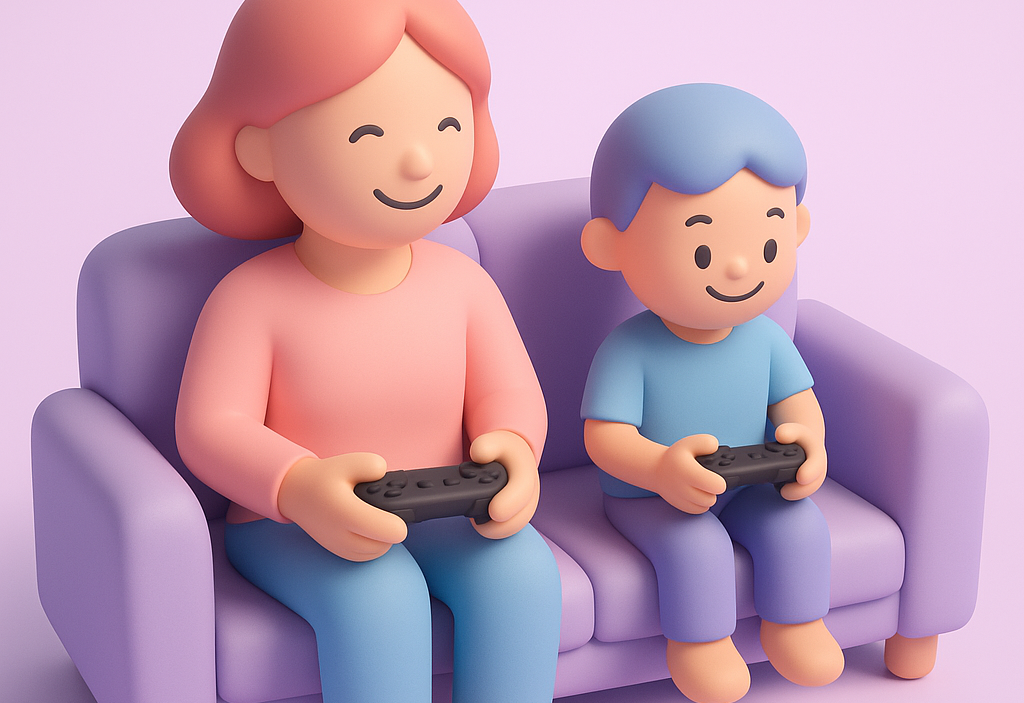
When we sit beside our kids, we see exactly what happened — the missed jump, the late turn, the timing mistake — which makes it easier to help them reflect and strategize. Without that context, it’s easy for kids to spiral into shame or overwhelm. With it, we can calmly support them through the moment and model how to reset after a setback.
It also helps to show them what good sportsmanship looks like in practice. Try to celebrate:
- A win, while also encouraging those who did not win that round
- Effort over outcomes
- Someone else’s win (even if it is their younger sibling)
Kids notice when we handle frustration with humor and patience, and they mirror it.
Breaks are another essential tool. If a child is stuck in the same loop of frustration, stepping away and returning with “fresh eyes” is often exactly what they need.
Competition doesn’t need to be avoided, it just needs to stay healthy. If the tension starts building or one child is consistently overwhelmed, pivot to something cooperative, switch the map, or adjust the difficulty. The goal is to help kids experience competition as something fun and developmental, not stressful.
Sibling play is a wonderful practice ground for this. Older kids can cheer on younger ones, offer tips, and celebrate their progress. Younger players learn to try again and stay motivated. Everyone learns how to encourage each other, a key part of sportsmanship, both in and outside of games.
Most importantly, these moments give us chances to talk.
- “What felt hard?”
- “What do you want to try next time?”
- “What made you proud?”
These small reflections help kids build emotional awareness, confidence, and a growth mindset — skills they will use everywhere, not just on a screen.
Games That Encourage Good Sportsmanship
Game designers know that good sportsmanship makes play more enjoyable, so many modern games intentionally build these moments right into their design. Features like shared objectives, easy “retry” loops, supportive team prompts, and simple post-game rituals (like sending a quick “good game”) naturally encourage kids to practice empathy, fairness, and cooperation.
When we choose games with these pro-social mechanics, especially cooperative or low-stakes competitive titles, we’re giving kids a built-in structure for learning how to work together, celebrate others, and manage the emotions that come with winning and losing.
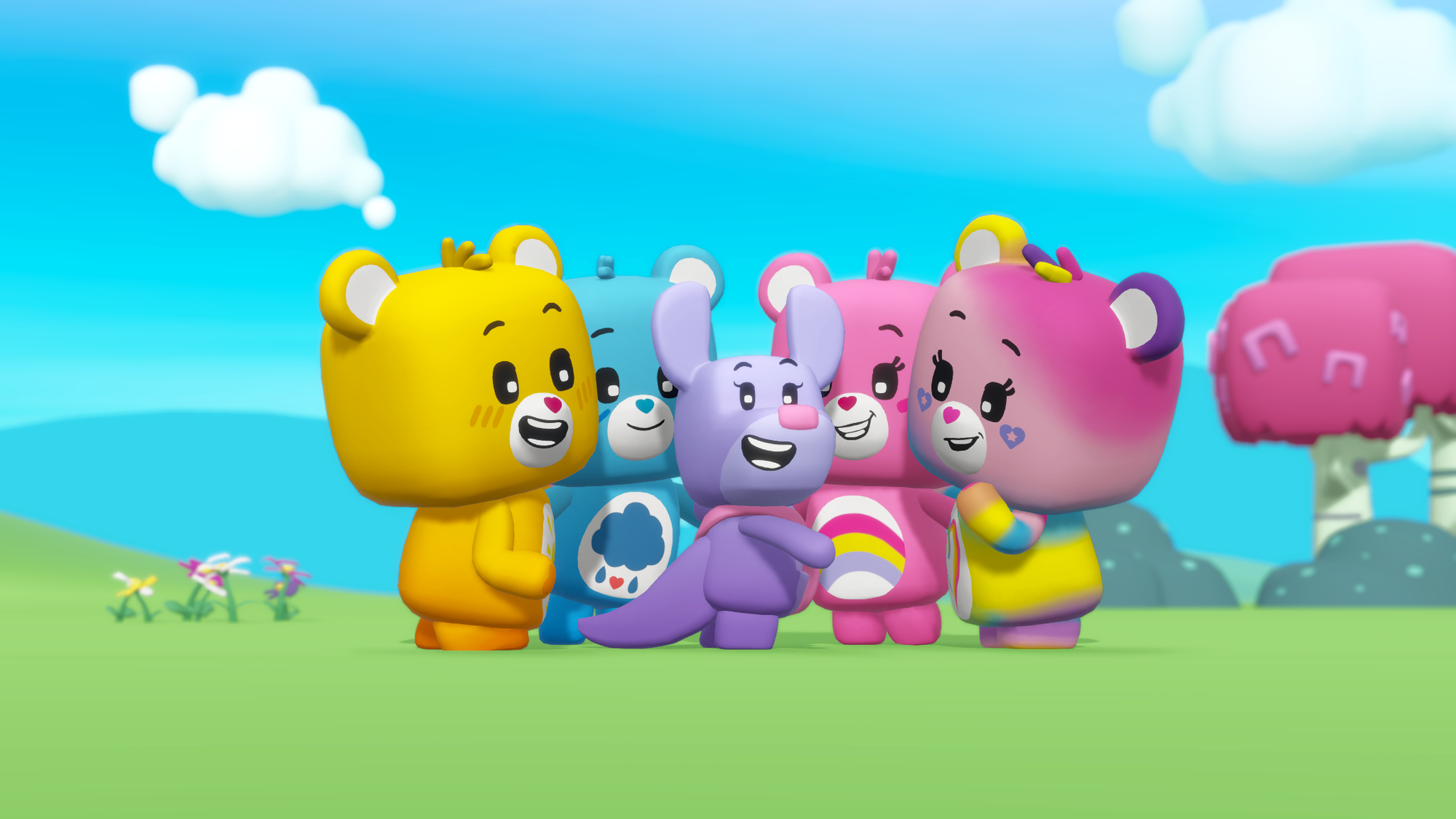
Racing games like Mario Kart, Hot Wheels Unleashed, and others offer a foundational win-or-lose structure with a good balance of chance and skill, and quick resets to keep frustration low. I also love the opportunities for good sportsmanship in:
- Animal Crossing: It encourages kindness, taking turns, and thoughtful social interaction
- Minecraft: Supports collaboration, co-building, and flexible problem-solving
- Nurture: With levels built around resilience, emotional regulation, teamwork, and reflection
These types of games give kids repeated practice with “try again” moments, clear indicators of what went wrong, and lots of opportunities to support siblings or parents during play. They also make it easier to shift from frustration into curiosity.
It’s also worth knowing which games aren’t ideal for this age group. Some titles introduce time pressure or chaos that can overwhelm young players. For example, fast-paced, multitasking-heavy games like Overcooked can feel stressful rather than supportive for kids still developing emotional regulation.
A good rule of thumb: If a child has tried multiple times and their frustration keeps rising without any progress, it’s probably a sign the game isn’t the right fit for that moment.
When to Step In: Addressing Frustration or Poor Sportsmanship
It’s completely normal for kids this age to react strongly to losing. What looks like anger is usually frustration. Our role is to recognize that early and step in before the spiral gets too big.
If play suddenly shifts into yelling, quitting, blaming others, or one child dominating or excluding the other, that’s a good moment to pause. Come in calmly, help them label what’s happening in their body, and figure out where the frustration is coming from.
Naming the feeling often takes the intensity down on its own.
Sometimes the best solution is simply a break. Fresh air, a snack, or stepping away from the screen can reset a child who’s too tired, hungry, or overwhelmed to regulate well. Some days, the jump just isn’t going to land — don’t push it.
When things cool off, you can return to the game with a “let’s try again later” mindset. Model small repairs:
- Taking turns again
- Offering a quick apology
- Encouraging a do-over when someone feels stuck
These are the moments where kids learn that emotions are manageable, relationships are repairable, and frustration doesn’t have to derail the fun.
Losing Gracefully = Winning in Life
Every loss, big or small, is a chance for kids to build resilience, empathy, and perspective. Digital play is especially powerful here because kids can “lose safely.” The emotions feel real, but the consequences don’t carry into the rest of their day. They get to try again immediately, adjust their strategy, and feel the satisfaction of improving.
These small cycles of setback → reflection → retry are exactly the kinds of experiences that help kids grow into confident, capable learners. They also teach kids how to celebrate others’ successes, which is just as important as handling their own disappointments.
Championing a sibling’s or friend’s win is a core part of good sportsmanship and a powerful skill to carry into school, friendships, and future teamwork. (And if you are looking for another way to teach this, which can be a challenging concept for a younger child to learn, might I suggest this book!)
Life is full of little competitions, both inside and outside the digital world. When we support kids through these early moments (helping them reflect, reframe, and recover), we’re giving them skills they’ll use everywhere. Questions like “What felt hard?” “What made this fun?” or “What will you try next?” turn each play session into practice for the rest of their lives.


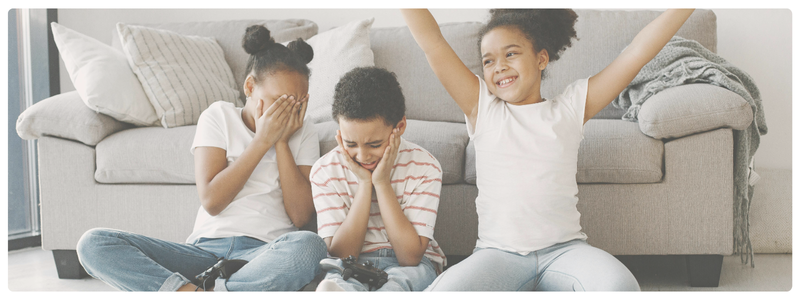


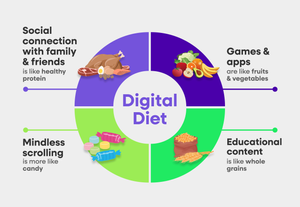
 Copy Link
Copy Link
 Share
to X
Share
to X
 Share
to Facebook
Share
to Facebook
 Share
to LinkedIn
Share
to LinkedIn
 Share
on Email
Share
on Email


